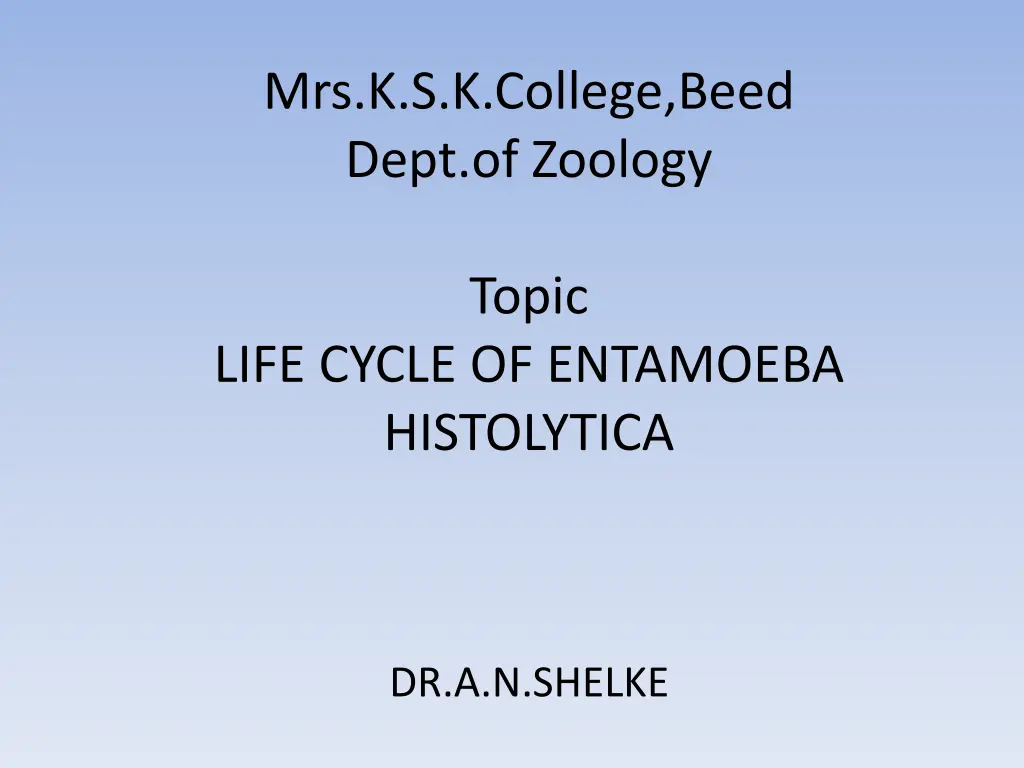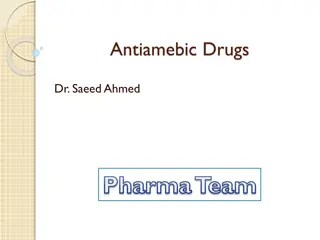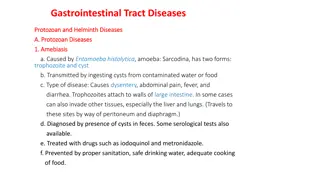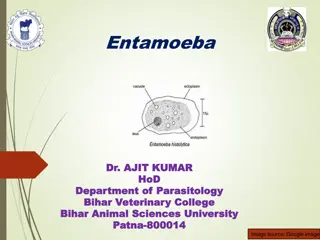
Understanding the Life Cycle of Entamoeba Histolytica at Mrs. K.S.K. College, Beed
Explore the monogenetic life cycle of Entamoeba histolytica as explained by Dr. A.N. Shelke at Mrs. K.S.K. College, Beed. Learn about the stages of encystment, transfer to new hosts, excystment, and control measures for E. histolytica infections.
Download Presentation

Please find below an Image/Link to download the presentation.
The content on the website is provided AS IS for your information and personal use only. It may not be sold, licensed, or shared on other websites without obtaining consent from the author. If you encounter any issues during the download, it is possible that the publisher has removed the file from their server.
You are allowed to download the files provided on this website for personal or commercial use, subject to the condition that they are used lawfully. All files are the property of their respective owners.
The content on the website is provided AS IS for your information and personal use only. It may not be sold, licensed, or shared on other websites without obtaining consent from the author.
E N D
Presentation Transcript
Mrs.K.S.K.College,Beed Dept.of Zoology Topic LIFE CYCLE OF ENTAMOEBA HISTOLYTICA DR.A.N.SHELKE
LIFE CYLCE OF ENTAMOEBA HISTOLYTICA
Life cycle Entamoeba histolytica is monogenetic, i.e., its life cycle is completed on one host only; the man. Its life cycle is completed as follows: Encystment: In the precystic forms, entamoeba remains only in the intestinal lumen. They undergo encystment but before encystment, the parasites round up, eliminate food vacuoles and accumulate considerable amount of food materials in the form of glycogen and black rod-like chromatoid granules. Each parasite secretes a thin, rounded, resistant, colourless and transparent cyst wall around it. The cysts of Entamoeba histolytica vary in size. Its cytoplasm is clear and each cyst is mononucleate at this stage. Presence of chromatoid bodies is the characteristic of the cysts of Entamoeba histolytica. They occur either singly or in the multiples of two or more. The nucleus of the cysts divides twice so that each cyst now becomes tetra nucleate (fig. 9.2). At this stage, the cyst is infective to a new host. Encysted forms pass out with the faecal matter of the host
Transfer to new host: The infective cysts remain viable for a considerable length of time outside the human intestine, if environmental conditions are favourable. Infection of fresh human host takes place by swallowing the infective cysts with contaminated food and drinks
Excystment The metacystic trophozites feed on the contents of the intestine and grow in size to form the trophozites of the next generation. The trophozoites stay in the lumen of the intestine for a particular period when they may attack the wall of the intestine and start the life cycle again. Entamoeba histolytica causes amoebic dysentery, abscesses in liver, lungs and brain and non-dysenteric infections.
CONTROL MEASURES OF E.HISTOLYTICA 1. Sanitary disposal of faecal matter 2. Perfect sanitation and protection of water and vegetables from pollution. 3. Washing of hands with antiseptic soap and water before touching the food. 4. Cleanliness in preparing the food. 5. Protection of foods and drinks from houseflies, cockroaches, etc. 6. Raw and improperly washed and cooked vegetables should be avoided.








